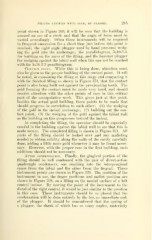Page 593 - My FlipBook
P. 593
FILLING CAVITIES WITH (iOLI), BY CLASSES. 285
point shown in Figure 369, it will l)e seen tliat the building is
around an arc of a circle and that the angle of force must be
varied accordingly. Often three instruments will be required
in frequent succession for a short time just before this point is
reached; the right angle i)lugger used by hand pressure wedg-
ing the gold into the anchorage; the parallelogram, 5x10-3-3,
for building on the mass of the filling, and the bayonet plugger
for wedging against the labial wall when this can not be reached
with the 5x10-3-3 parallelogram.
Contact point. While this is being done, attention must
also be given to the proper building of the contact point. It will
be noted, in examining the filling at this stage and comparing it
with the finished filling as shown in Figure 371, that the contact
point is also being built out against the proximating tooth. The
gold forming the contact must be made very hard, and should
receive attention with the other points of care in this critical
part of the manipulative work. This gives just at this point,
besides the actual gold building, three points to be made that
should progress in correlation to each other: (1) the wedging
of the gold in the incisal anchorage; (2) building out the con-
tact point; (3) the wedging of the gold against the labial wall
as the building on this progresses toward the incisal.
In completing the filling, the operator should be especially
careful in the building against the labial wall to see that this is
made secure. The completed filling is shown in Figure 371. All
parts of the filling should be looked over and any malletiug
needed to obtain solidity along the walls of the cavity carefully
done, adding a little more gold whenever it may be found neces-
sary. However, with the proper care in the first building, such
additions should not be necessary.
After condensation. Finally, the gingival i^ortion of the
filling should be well condensed with the pair of direct-action
quadrangle condensers, one reaching into the interproximal
space from the labial and the other from the lingual. These
instrument points are shown in Figure 329. The position of the
instrument in use, the finger positions and mallet position are
shown in Figure 328, on a filling on the mesial surface of a left
central incisor. By moving the point of the instrument to the
distal of the right central, it would be just similar to the position
in this case. These instruments should be so placed that the
condensation will be done entirely by the toe, or immediate end,
of the plugger. It should be remembered that the spring of
a plugger, the shank of which has so many angles, materially


